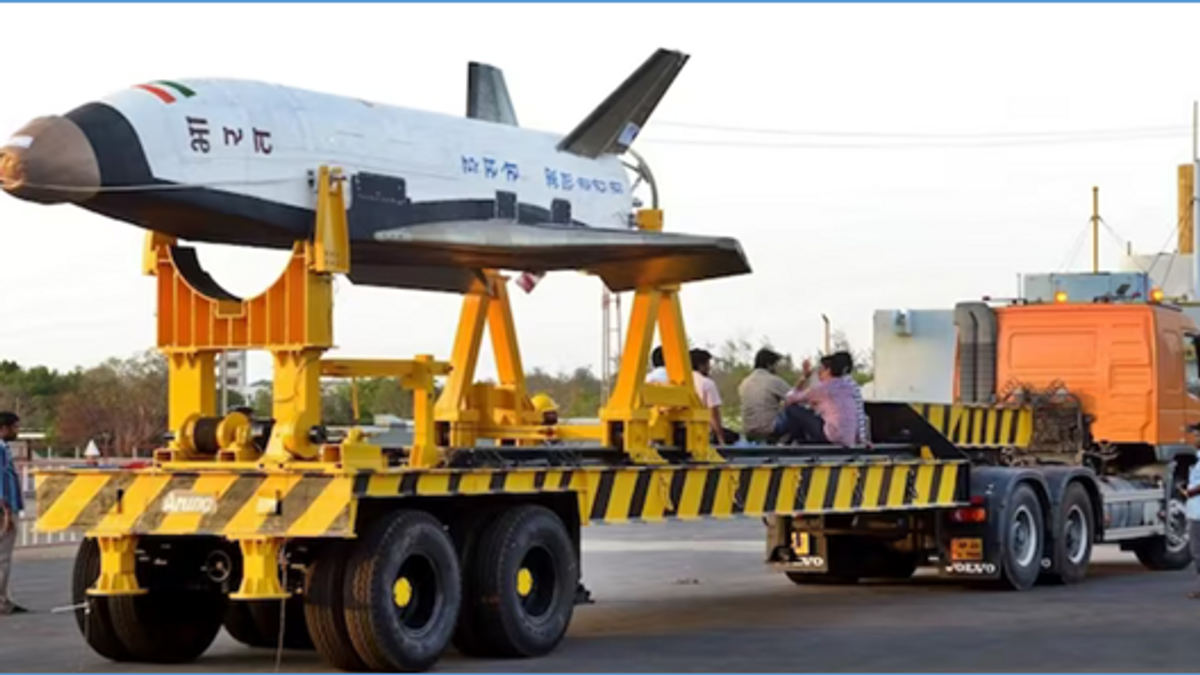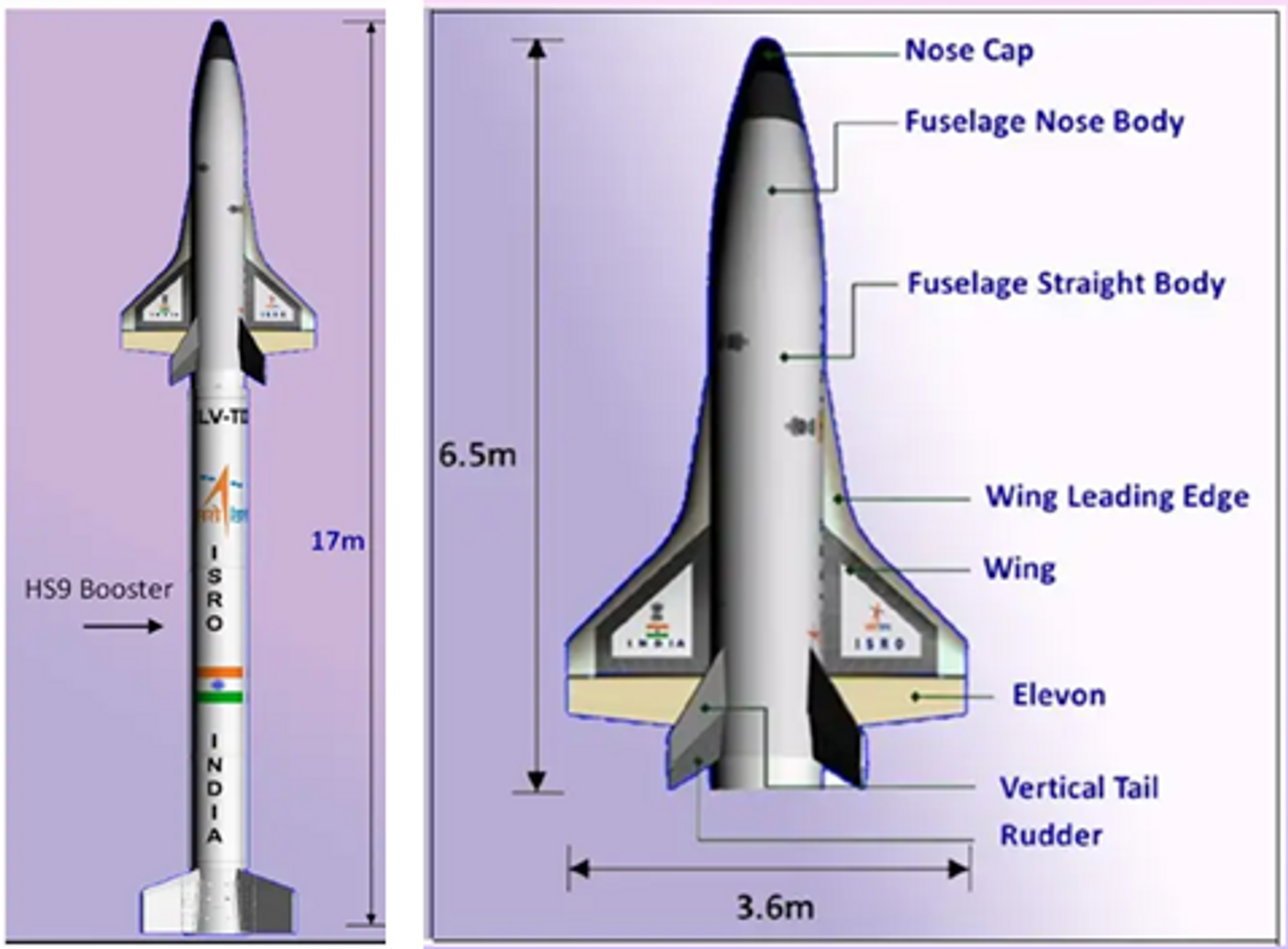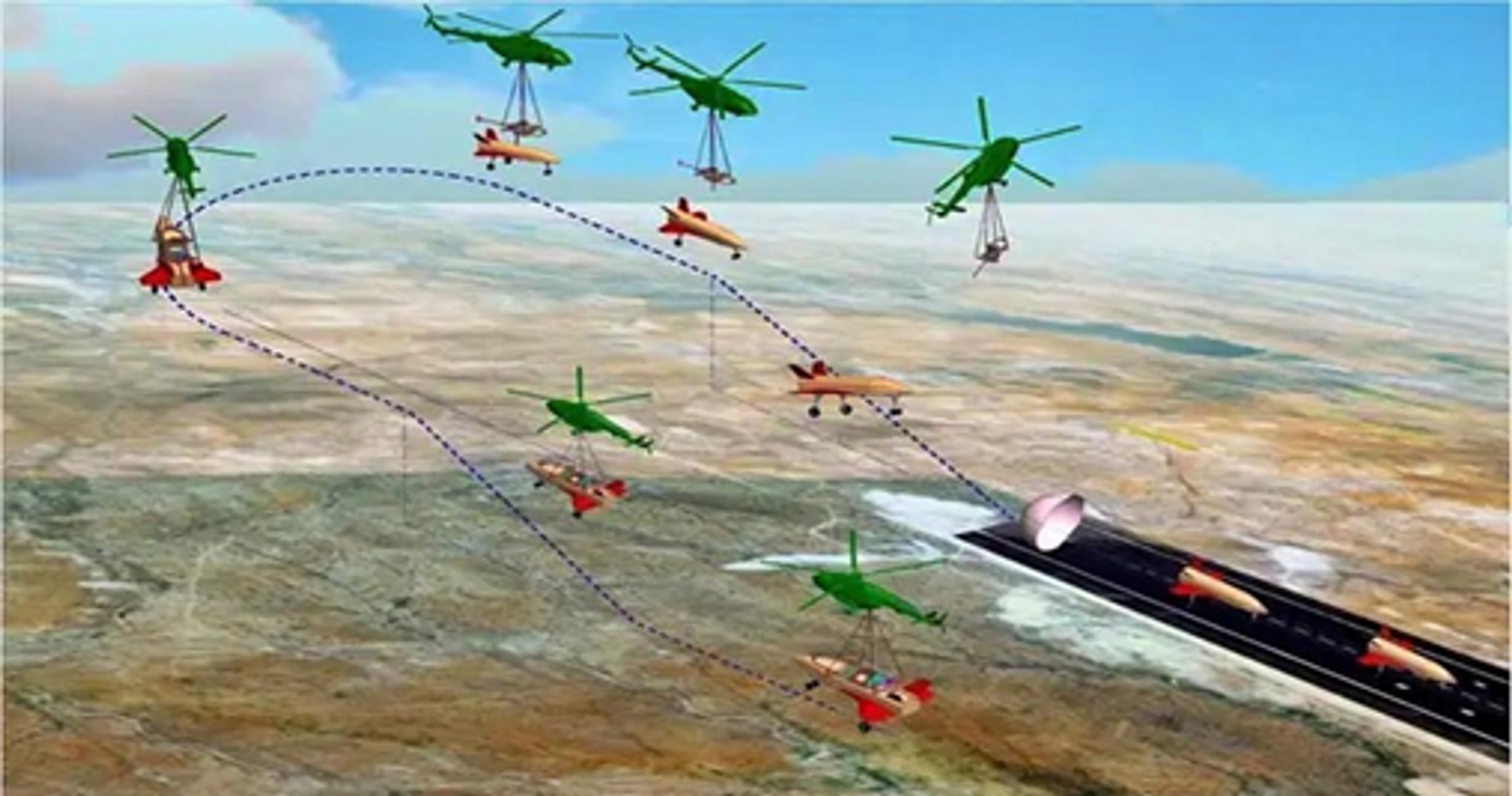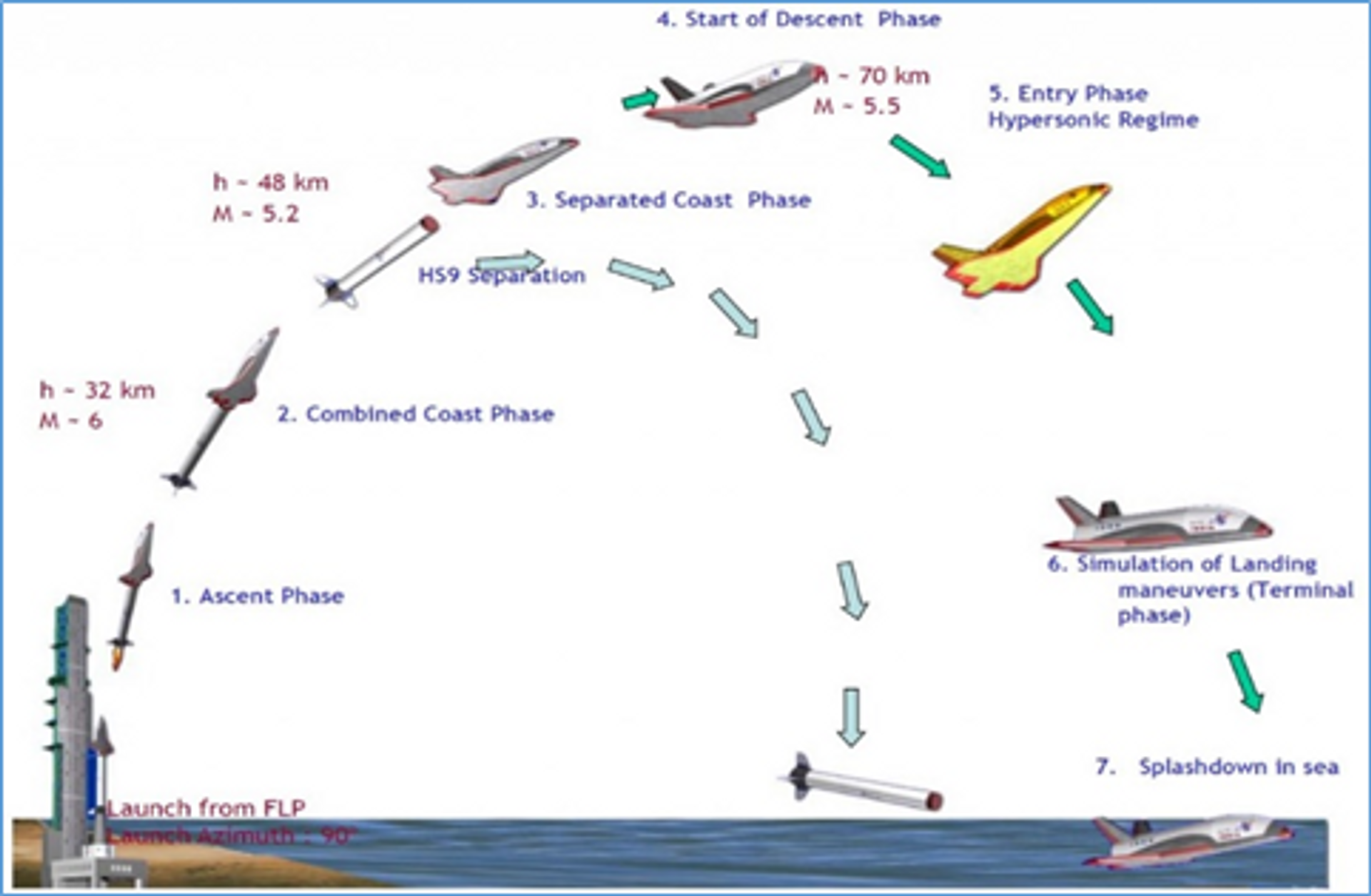
Reusable Launch Vehicle: Is ISRO on Right Track?
On 02 Apr 2023, ISRO launched its Reusable Launch Vehicle (RLV) for its second trial, this time for evaluating its approach and landing system they called Landing Exercise/Experiment (LEX). It may be recalled that RLV was tested for Hypersonic Exercise/Experiment (HEX) of Atmospheric Re-entry in 2016 claiming that the trial met all objectives. It has been nearly 7 years gap between the two trials of the RLV. Let us critically examine if ISRO is really at right track of its new R&D of its RLV program. RLV looks like a micro-size space shuttle of 6.5x3 m tip-to-tip dimensions with the fuselage having a diameter of 1 m (with internal diameter of around 0.7 m?). Its belly side has ceramic tiles to withstand the high temperatures of re-entry. It is launched by mounting over or along a booster rocket.
First of all, let us clarify the misnomer that ISRO has created by using the term “Reusable Launch Vehicle (RLV)”. This name was in frequent use in the early 2010s when SpaceX had taken up the challenging task of design & development of a reusable launch vehicle for their Falcon-9 program. Their idea was to have a robust, launch vehicle, the ‘Falcon-9’ rocket along with reusable ‘Crew Dragon’ payload (carrying crew and/or supplies) to reduce both its cost of mission and also launch intervals as they have thousands of satellites lined-up for launch. In addition, they also have NASA tasks of sending supplies and replacement crews to the International Space Station (ISS) besides some others. However, in ISRO’s context, what we understand by now, is that RLV launcher/booster rocket is not reusable, it is discarded in sea and lost for ever. Only the winged part of the RLV looking like a mini-Space vehicle (without rocket), is believed to be reusable. It is believed to be carrying payload to space, deploy them and return. Hence, a better name could have been a reusable space vehicle…but it is the prerogative of the parents to name their children and on that count, ISRO may not be challenged…although terms/names used in scientific R&D are preferred to be indicative of the product technologies or its mission objectives.
RLV-TD under trials is apparently its full size engineering model as shown above. However, fuselage diameter is 1 meter which is inadequate to carry/house any moderate size payload (mostly satellites) leave alone human occupation or scientific experiments. ISRO doesn’t mention it to be a scaled down model. Thus it apparently carries out the purpose of the presently used payload cone of the rockets. Thus ISRO may be intending to deploy satellites from a platform that is much heavier than the presently used payload section of much greater internal capacities. It also means that the actual payload carried by the RLV is going to be much smaller than they carry in the present payload section of the rockets. If the RLV had enough space to house a Robotic Arm to capture a disabled space asset to bring it back, it could still have been worth but that doesn’t seem to be the case. There is yet another possibility of carrying out deep space cosmic research but inside space for such ventures are abysmally small. Of course, the present payload section of the rockets is lost for ever as they burn out during re-entry. However, RLV when returns after deployment of payloads, needs significant refurbishments before it can be re-used; that may incur expenditures much higher than the present deployment platform carried in the rockets. So what gain will ISRO achieve?
Let us come back to the RLV test/trials of 02 Apr 2023. It is believed to be the actual engineering model of RLV for an approach and landing exercise/trial (LEX). Of course, extensive wind tunnel tests, CFD simulations, integrated navigation and multiple captive phase tests were undertaken prior to this flight. The RLV approach and landing systems (of both hardware & software) carried Pseudolite system, KA-band Radar Altimeter, NavIC receiver, indigenous Landing Gear, Aerofoil honey-comb fins and brake parachute systems.
The vehicle was transported to Chitradurga experimental runway strip where it was airlifted by IAF Chinook heavy lift helicopter to 4.5 Km AMSL; and released from the carrying winch-system in near alignment but 4.6 km short of the approach runway. RLV made a precision high speed touchdown (of 350 kmph) as expected in the space vehicles returning from orbit (after passing through re-entry and subsequent decelerations of wind-drag) on its landing gears and coming to a halt. Some experts felt concerned at two points firstly, a very steep nose-down attitude of approach 13-19 sec after release from the winch (though it could be deliberate to avoid stall) and secondly, an unusually high-Alfa flare up (nearly 40 deg) before touchdown. Baring a bit jerky undercarriage movements towards the end of landing run, all manoeuvres appeared smooth.
A few questions remained unclear whether it was an exact engineering model or was a scaled down experimental vehicle. The difference between the two in terms of trial objectives are obvious in that the former all systems, subsystems, the payload configuration are in actuals whereas in the latter, it is not. The implications may be huge. The former provides data on its behaviours in entirety (incl CoM effects (on approach angle), impact loads on the undercarriages, length requirements of the runway strip and so on.
World knows of ISRO’ high reputation of being a technical prowess in space technologies in some of their missions. However, not many are convinced of their 23 May 2016 RLV-HEX trial of evaluating Hypersonic re-entry experiment. It was ridiculous to have design speed for the trial around 5 Mach (achieved 4.78 Mach) whereas any vehicle in the Low Earth Orbit (LEO) has re-entry speeds around ~25 Mach. Such speeds create atmospheric re-entry friction temperatures in the vicinity of 2000 deg C whereas RLV-HEX trial at ~5 Mach would create the temperatures of just a few hundred deg C. Testing the RLV for re-entry characteristics at a speed nearly 1/7th of the actuals could be termed as very poor scientific exercise. Secondly, the design experiment of sacrificing both launcher rocket as well as RLV in the sea was incomprehensible. The experiment could have been delayed if the design objectives were unlikely to be met. India doesn’t have the type of unlimited funds like Elon Musk’s SpaceX who intends to crash his re-usable massive Starship in the ocean. Not sure if ISRO had pressure from some quarters to hurriedly carry out the poorly planned test/trial. In this regard, present Chairman Dr Somnath’s statement is encouraging in which he mentioned of another atmospheric re-entry test after RLV’s few orbits; called Orbital Re-entry Experiment (OREX). It is believed ISRO is also contemplating carrying another Return Flight Experiment (REX) and also a Scramjet Propulsion Experiment (SPEX) for objectives unknown to the author at this juncture.
It is believed that ISRO intends to install Scramjet air-breathing engine in the RLV. This could provide the vehicle a capability to maneuver after entering the atmosphere but installation of the engine will further reduce space within already cramped up RLV payload section. Further for the engine to work, onboard fuel will be required that will pose legitimate safety concerns at the re-entry temperatures. All past shuttles avoided carrying fuels onboard. This innovative decision of ISRO in the modern technological knowhow may be justified but this it needs to be proven.
The author was denied interaction with concerned scientists so as to seek answers to some of the questions posed above. Looking at its small payload capability, RLV programs objective seems to be unclear from the viewpoint of its economic advantages. The HEX carried out 7 yrs back was possibly an eyewash, needs to be repeated. However, it is a welcome step as a technology demonstration that could be scaled up in size to meet larger commercial objectives of carrying larger payloads, trapping or bringing back an orbiting satellite or carrying out a deep space scientific mission.




